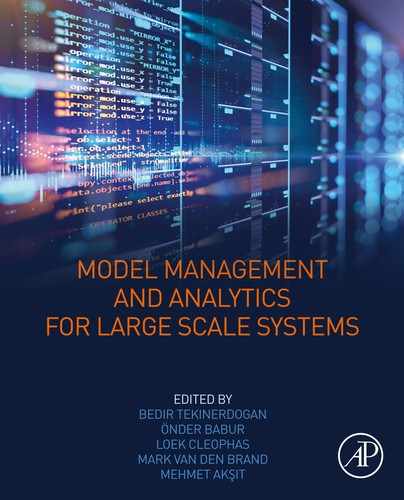Table of Contents
Analysis in the large: A foreword
Part 1: Concepts and challenges
Chapter 1: Introduction to model management and analytics
1.3. The inflation of modeling artifacts
2.3. Experiences in creating & sharing a collection of UML software design models
2.4. Challenges for Big Data-driven empirical studies in software architecture
Chapter 3: Model clone detection and its role in emergent model pattern mining
3.3. MCPM – a conceptual framework for using model clone detection for pattern mining
3.4. Summary of challenges and future directions
Chapter 4: Domain-driven analysis of architecture reconstruction methods
4.3. Domain model of architecture reconstruction methods
Chapter 5: Monitoring model analytics over large repositories with Hawk and MEASURE
5.4. Monitoring model analytics over large repositories with Hawk and MEASURE
5.5. Case study: the DataBio models
Appendix 5.B. EOL-based ArchiMate metric implementation
6.2. Background and related work
Chapter 7: Structuring large models with MONO: Notations, templates, and case studies
7.4. Describing and specifying model structures
7.5. Case study 1: Library Management System (LMS)
7.6. Case study 2: BIENE Erhebung (ERH)
8.3. Delta modeling for MBSPLs
8.4. Delta modeling with DeltaEcore and SiPL
8.5. Capabilities of DeltaEcore and SiPL
Chapter 9: OptML framework and its application to model optimization
9.2. Illustrative example, problem statement, and requirements
9.3. The architecture of the framework
9.4. Examples of models for registration systems based on various architectural views
9.5. Model processing subsystem
Part 3: Industrial applications
10.2. Domain-Specific Languages
10.4. Approach to practical investigation
10.6. Results of practical investigation
Chapter 11: Model analytics for industrial MDE ecosystems
11.3. Background: SAMOS model analytics framework
11.5. Model clones: concept and classification
11.6. Using and extending SAMOS for ASOME models
11.7. Case studies with ASML MDE ecosystems
